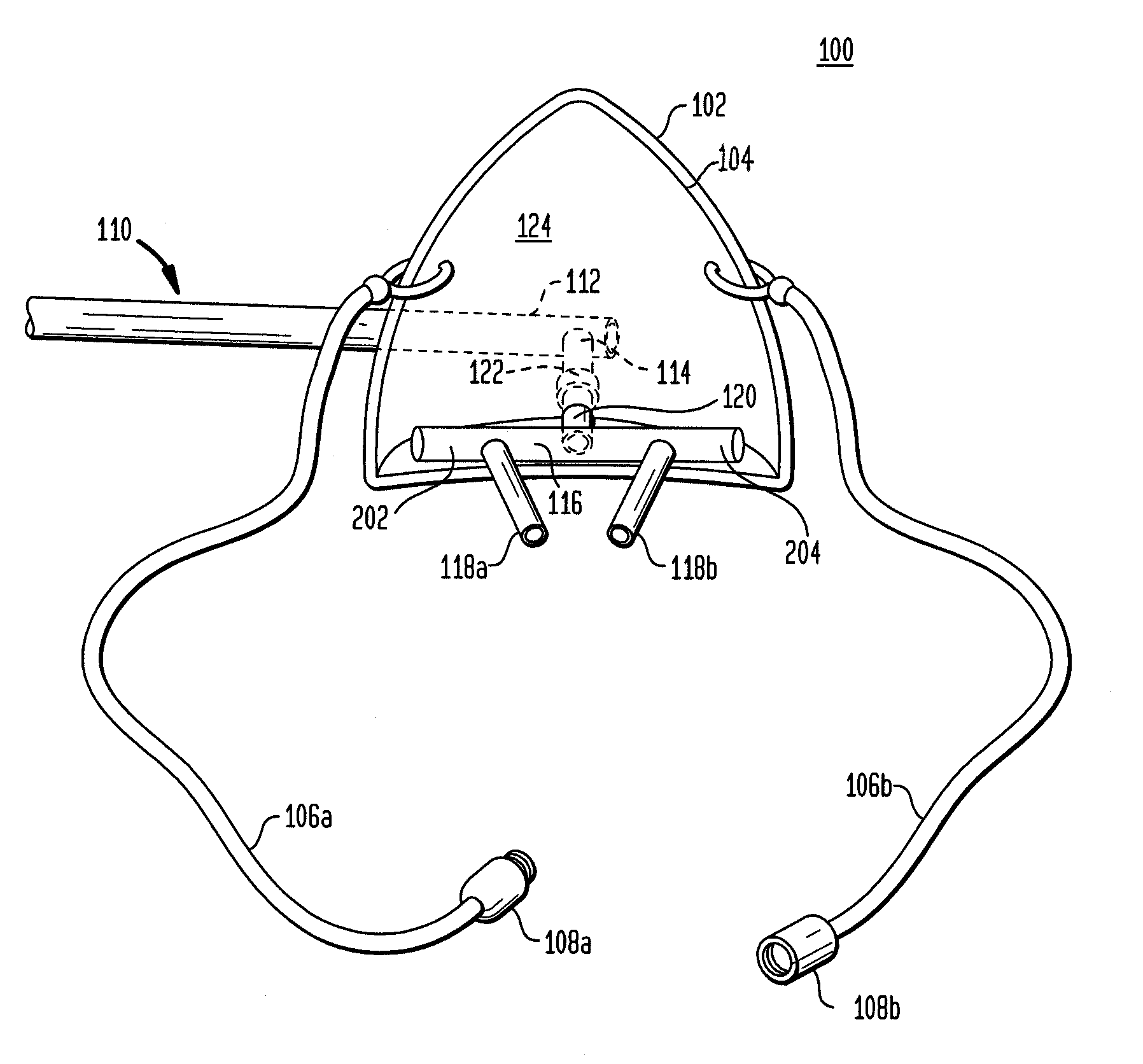Nasal mask assembly for nasal delivery
- Summary
- Abstract
- Description
- Claims
- Application Information
AI Technical Summary
Benefits of technology
Problems solved by technology
Method used
Image
Examples
Embodiment Construction
[0032]As shown in the FIG. 1B and FIGS. 2-5, the present invention is a nasal mask assembly 100 for delivering a fluid from a fluid source 504 into a patient's 302 nostrils 306a and 306b. The present invention is described in terms of a patient 302 using the nasal mask assembly 100 for receiving a direct flow of oxygen, but this is for convenience purpose only. It would be readily apparent for one of ordinary skill in the relevant art to use the nasal mask assembly 100 of the present invention for delivering alternative fluids to a patient, such as, breathable air and an anesthesia.
[0033]In the preferred embodiment, the nasal mask assembly 100 comprises a nasal cup 102 adapted to cover a patient's 302 nose The nasal cup 102 is made of clear plastic and has a general shape of a human nose such that it has a perimeter and an internal cavity 124 that extends away from the patient's face and terminates at a distal end 304. An input port 122 extends through the nasal cup 102 into the int...
PUM
 Login to View More
Login to View More Abstract
Description
Claims
Application Information
 Login to View More
Login to View More - R&D
- Intellectual Property
- Life Sciences
- Materials
- Tech Scout
- Unparalleled Data Quality
- Higher Quality Content
- 60% Fewer Hallucinations
Browse by: Latest US Patents, China's latest patents, Technical Efficacy Thesaurus, Application Domain, Technology Topic, Popular Technical Reports.
© 2025 PatSnap. All rights reserved.Legal|Privacy policy|Modern Slavery Act Transparency Statement|Sitemap|About US| Contact US: help@patsnap.com



